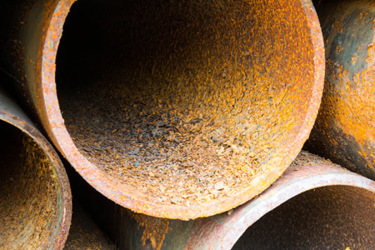Rust Is A Slow Poison
By Saumya Jain

With the escalating call for water wells across the globe, much of it driven by the increasing use of water-well water in agriculture and construction, water-well drilling is now an $85-billion industry.
The year-plus of the pandemic has brought home the truth that every country needs to be self-reliant for water and food, lending an impetus to the demand for water wells. Warning bells have been rung by environmentalists, as recent studies show that water extraction outweighs replenishment, making it mandatory for all to consider ways to conserve water.
However, one of the biggest challenges the industry faces is rust. Rust corrodes, and through the years has been a serious contributor to groundwater pollution. It threatens not only safety, but also the pocketbook and the daily quality of life.
Worried? You should be!
Rusting is a characteristic oxidative phenomenon, a second-leading reason for pipe damage in cast iron, copper, and galvanised steel pipes. When rusting occurs, a large number of issues follow. Rusting weakens iron pipes over time and prompts spillage in the piping framework — which, in turn, causes a breakdown in the borewells. Another serious issue is the contamination of soil through which the rusted water streams. Water gets discoloured, develops a metallic odour, and gets contaminated with rust flakes, making it unusable.
In the water-well environment, there are two fundamental kinds of corrosion: electrochemical and mechanical.
Electrochemical corrosion is based on a chemical reaction occurring at the metal surface with the transference of electrons between atoms. Electrochemical corrosion comes in many forms such as galvanic, microbial influenced, crevice, pitting, etc.
Mechanical corrosion is a physical process where the body degradation of the metal happens due to interaction with solids present in the water, such as in a sand-pumping well. The water-well environment, which exposes various metallic components to very capable electrolytes (soil and water) with dynamic chemical properties, is especially conducive to this scenario.
An assessment reveals that about 85 percent of water-dispersion pipes used are cast iron and steel. Due to their long-term service and exposure to an aggressive environment in soil, mature and weakened metal lines have resulted in high rates of failure. For instance, the failure rate of cast-iron pipes can be just about as high as 39* bursts for every 100 km per year in Canada; the failure rate of water mains in Australia is 20** bursts for each 100 km each year. Overall, the outcome of pipe failures can be socially, economically, and ecologically disastrous, bringing about a huge disturbance in everyday life, substantial financial misfortune, widespread flooding, natural contamination, and even casualties.
Corrosion is so prevalent and takes so many forms that one cannot eliminate its occurrence. However, it has been estimated optimum corrosion-management practices could help save 25 to 30 percent*** of annual corrosion costs in the U.S.
In response to the extreme costs brought on by problems associated with corrosion, many products and technologies have been developed to help protect against, or at least slow down, the various corrosion processes that threaten water-well systems.
Perhaps the most effective preventive measure one can take to help prevent corrosion is to select the proper materials to begin with. Whether it’s in the design phase or replacement during maintenance operations, choosing the right materials to withstand the corrosion forces present is critical in extending the lifespan of a water-well system.
Of course, several factors need consideration when selecting materials, including cost, design features, physical properties required, and compliance with regulations.
So, What Is The Alternative?
A cost-effective and durable alternative lies in uPVC pipes. They do not rust and have almost frictionless surfaces that require less energy to pump out water.
Lighter-weight uPVC pipes also require less labour to install and are thus safer. Being recyclable, they offer value even at the end of their lifecycle of 50-plus years. These two factors make them the submersible pump’s best friend.
Incredibly impervious to corrosive forces, bacteria-free, free of any harmful metals, and resistant to acidic attack, they are a durable and safe option that promises quality water over the years. The low-friction surface of uPVC pipes drives pumps lesser for pumping out water, thus saving both energy and adding years to the life of the pump.
The optimistic perspective holds the view that future generations will find undeniably more remarkable advancements and assets to utilize and oversee groundwater better than today. Even then, after all is said and done, it is ethically incumbent on us all to deal with the current accessible water ideally and optimally so that we leave behind healthy aquifers.
At a time when water, the source once considered imperishable, is deteriorating at the speed of light, it’s critical to conserve it by hook or by crook.
*Fact check: J. M. Makar, “Preliminary analysis of failures in grey cast iron water pipes,” Engineering Failure Analysis
**Fact check: http://archive.nwc.gov.au/__data/assets/pdf_file/0015/11265/NPR_urban.pdf
***Koch 2012
Saumya Jain is managing director of Vinyl Pipes, a leading ISO 9001-certified pipe manufacturer from India. Visit them at www.vinylpipes.com.
